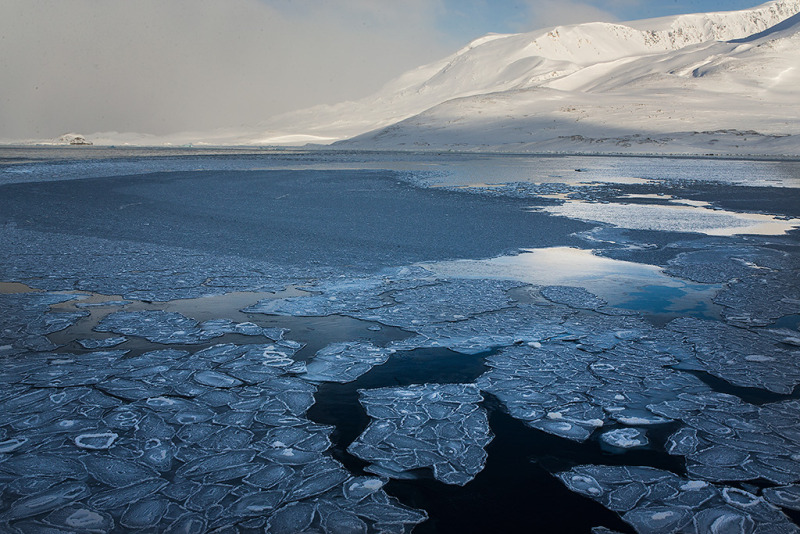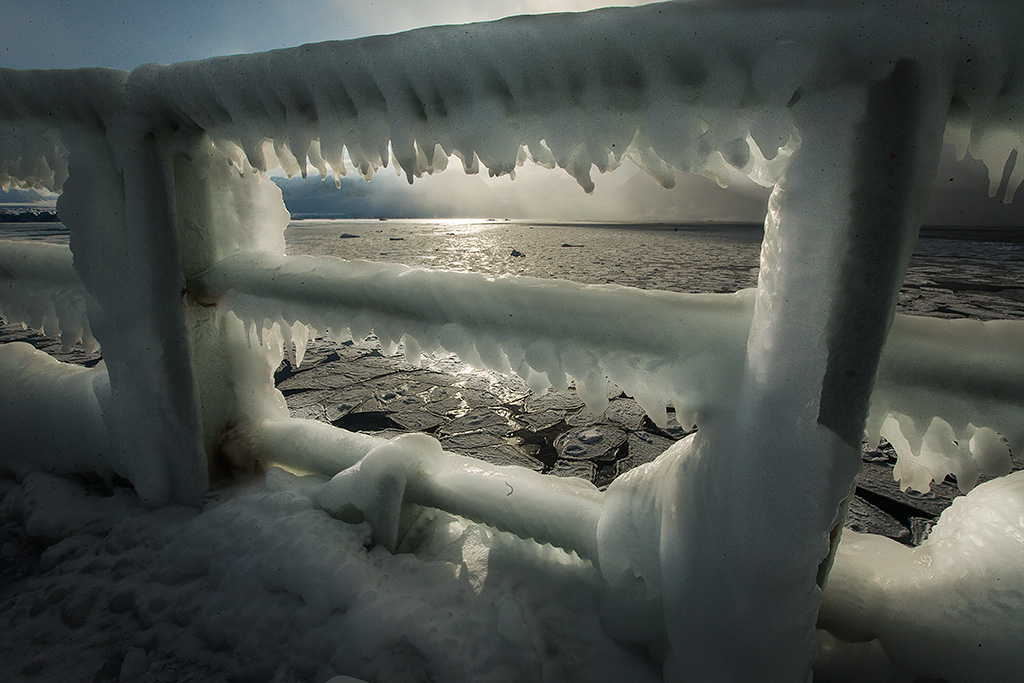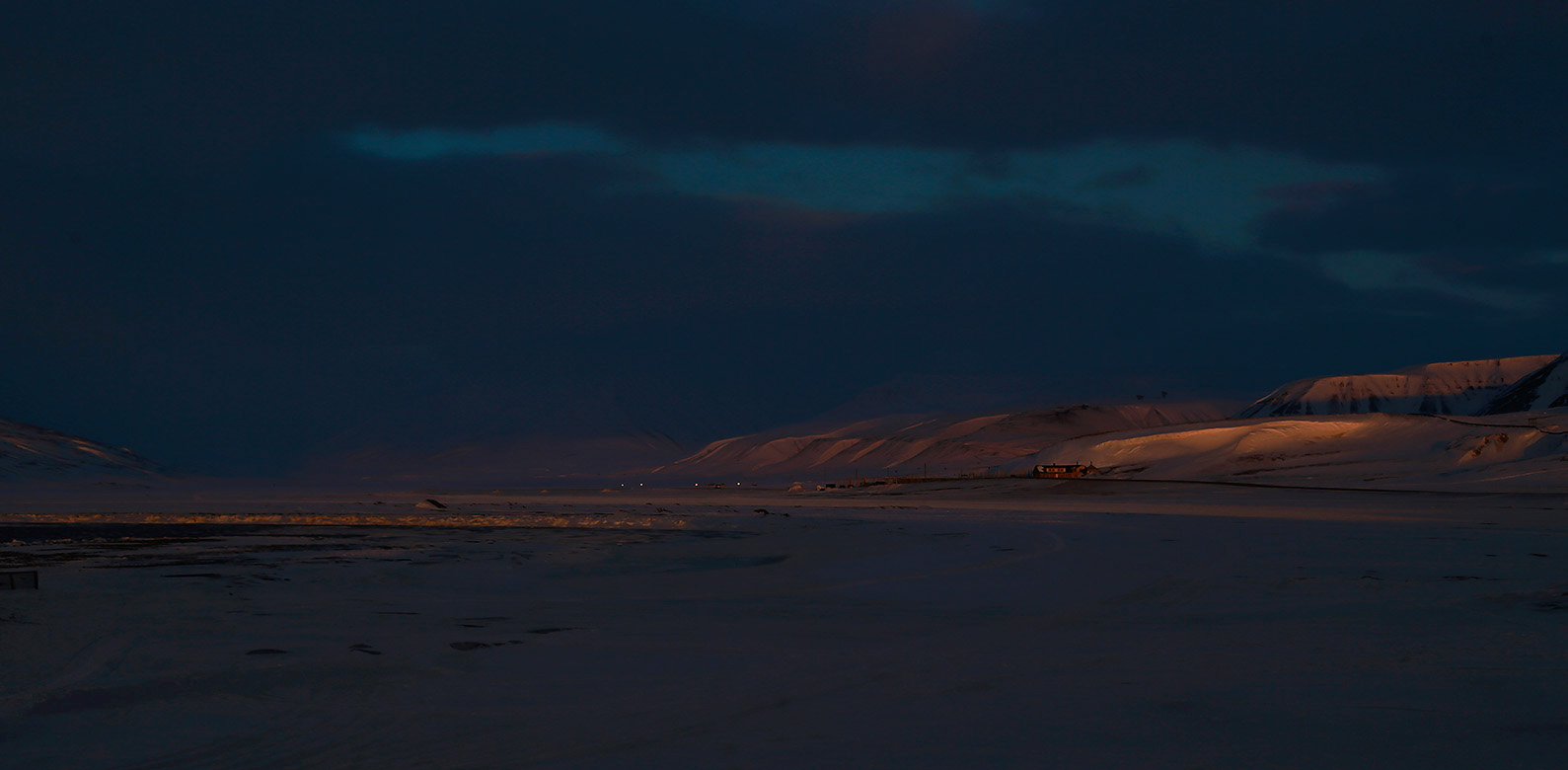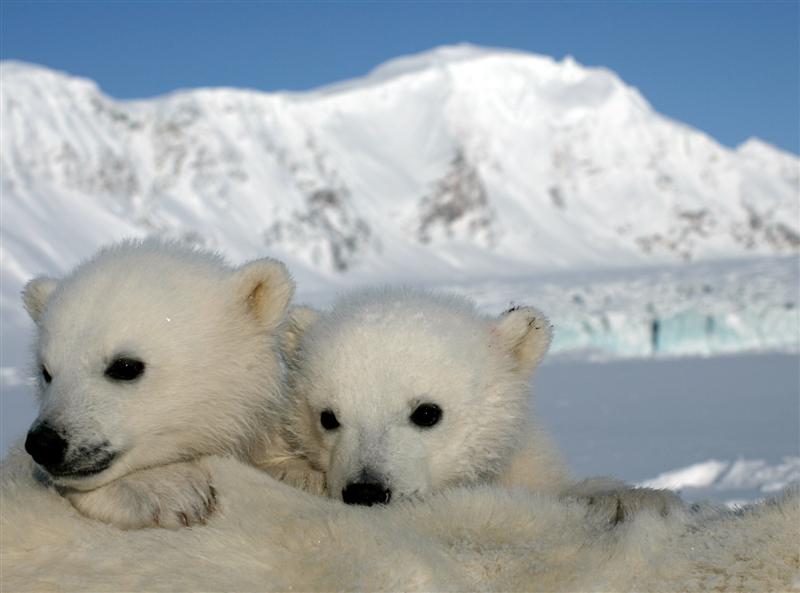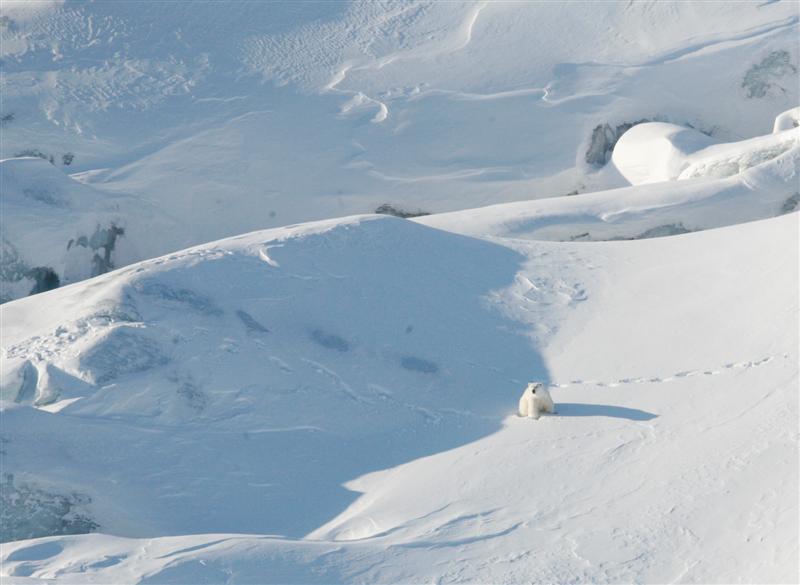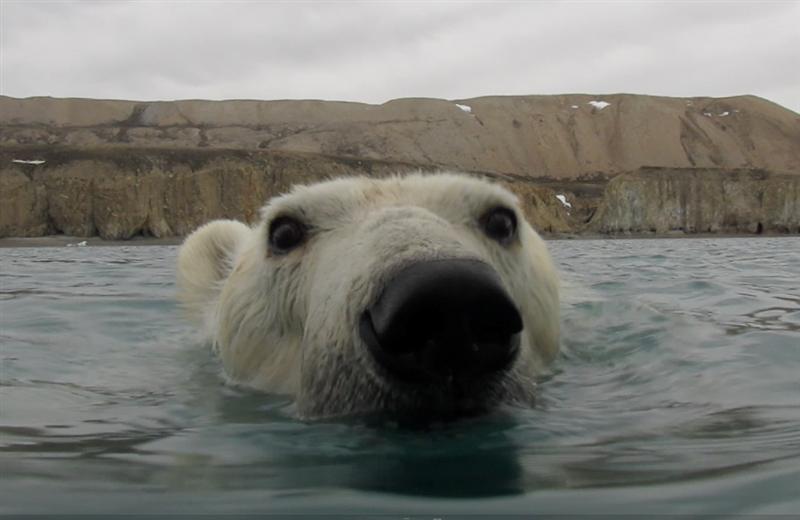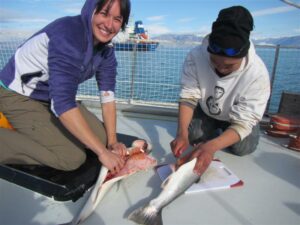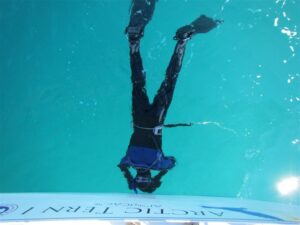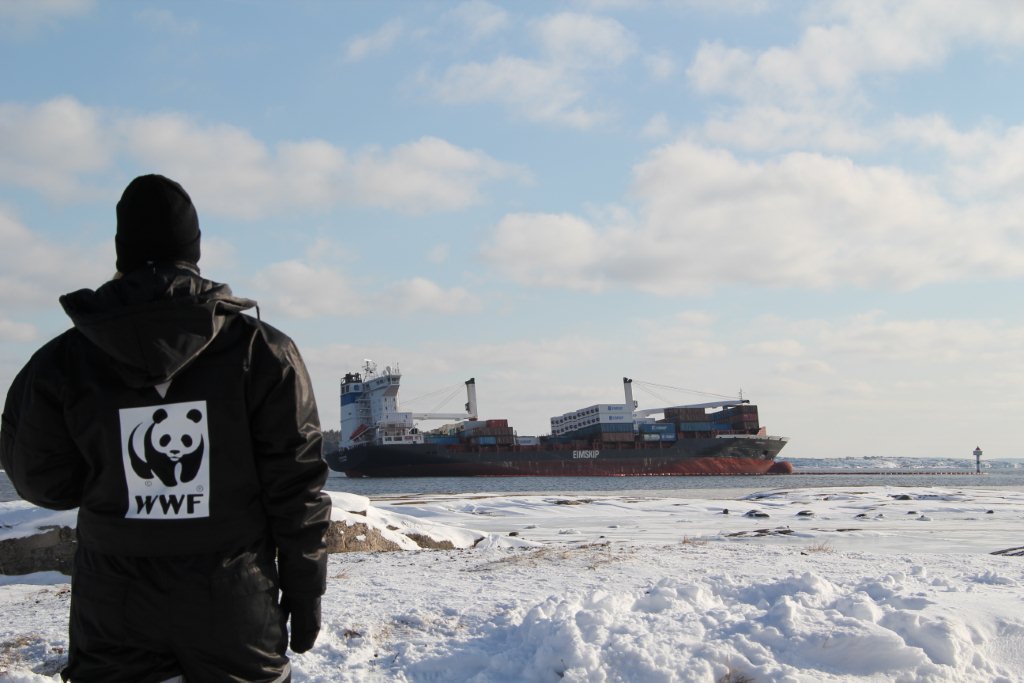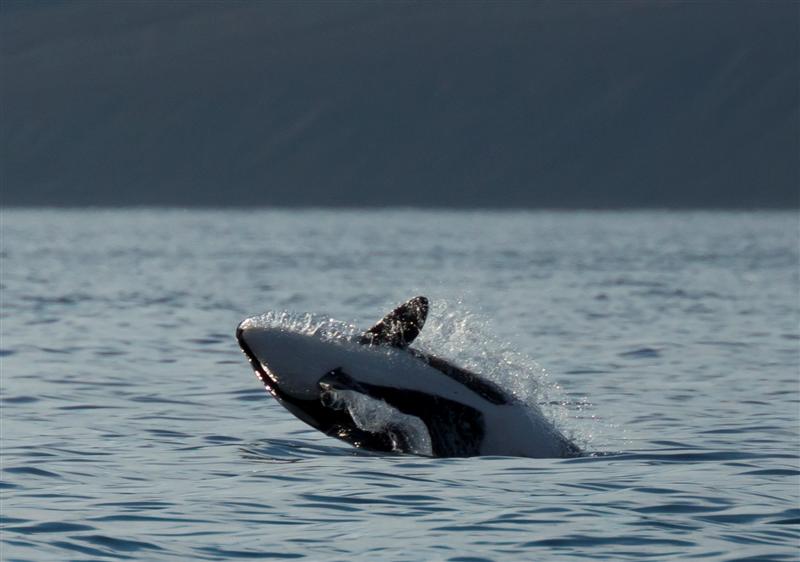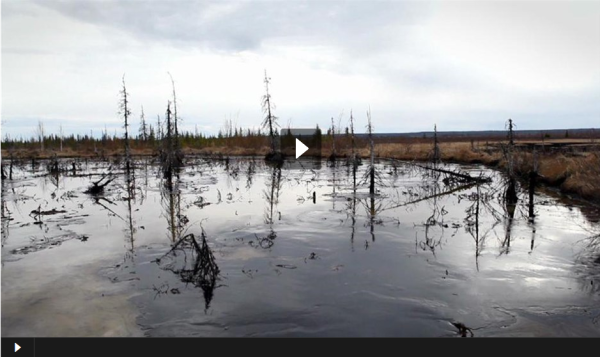First day in-and-out of the sea ice
By Gert Polet
Cracking ice pushed aside by the Lance, wakeup call at 5:00. We are entering Smeerenburgfjord, named after the Dutch settlement Smeerenburg (blubber town), the largest 17th century Dutch whaling station on Svalbard. In the peak whaling years, some 250 Dutch vessels were busy catching slow moving bowhead whales in large numbers – the blubber was cooked here to oil which lighted the streets of Amsterdam. The demise of the whale population caused the first oil crisis – and the bowhead whale has still not recovered in the North Atlantic, the closest estimate is that there are 200 nowadays. We spot bearded seal sunning on the thick sea ice.
Then, when entering the waters North of Spitsbergen island, open water. Little auks fly pass in small groups. Two ivory gulls call to us their strange call when they pass by, we are happy to see this rare gull of the Arctic which is completely snowy white.
Jon, the polar bear expert of the Norwegian Polar Institute, decides we move into Woodfjord and Liefdefjord – said to be named after named after the Dutch ship the Liefde (love) which sank here.
The fog lifts, the sun breaks through, slowly revealing the spectacular rugged mountains covered in snow and the gentle glaciers which reach all the way to the sea. A fairytale country which makes one silent and quiet. But it is strange that the fjord is completely open. Jon, who has been here every year since 2003 has never seen this fjord without ice around this time of year. He showed some pictures of holes in the little ice he encountered last week, with blood on the ice – killed pups of ringed seals. Ringed seals never come on land and depend on sea ice for their young to be born. This year it appears that there is not only hardly any sea ice but also just a few centimetres of snow, too thin for ringed seals to dig a protective snow cave for their young. This year many young seals are easily detected and killed by polar bears, glaucous gulls and arctic foxes. The breeding success in nearby Kongsfjorden is closely monitored by NPI colleagues of Jon and since 2005, not a single ringed seal born there survived because of too little snow. It not yet clear whether the ringed seal population is heading for a steady decline or whether they go elsewhere to calve where there is sea ice. And if ringed seals go, polar bears will find it harder to find food.
The NPI crew decides to check the coastline for polar bears and dens. They expect polar bears along the beaches, eager to find sea ice to get onto, in search of seals. Soon the helicopter lifts off and becomes a tiny black spot against the enormous white mountains surrounding this marvellous fjord. I remember the polar bears and fin whales of last year in this exact place. Waiting for their return we have a look at Monaco glacier – a few years ago a new islet emerged from underneath the retreating glacier. Will Jon have had success finding the female with the satellite collar? If he manages to give her a new collar we will have a subsequent year of information about the movements of her in the coming year!
